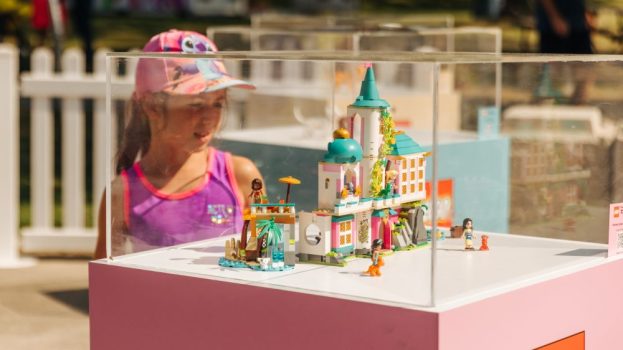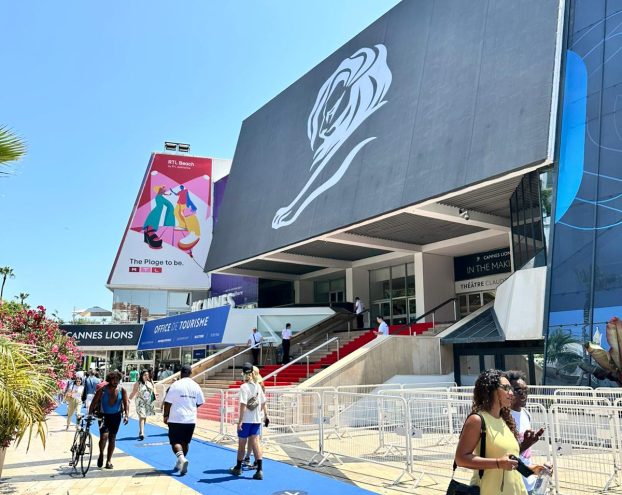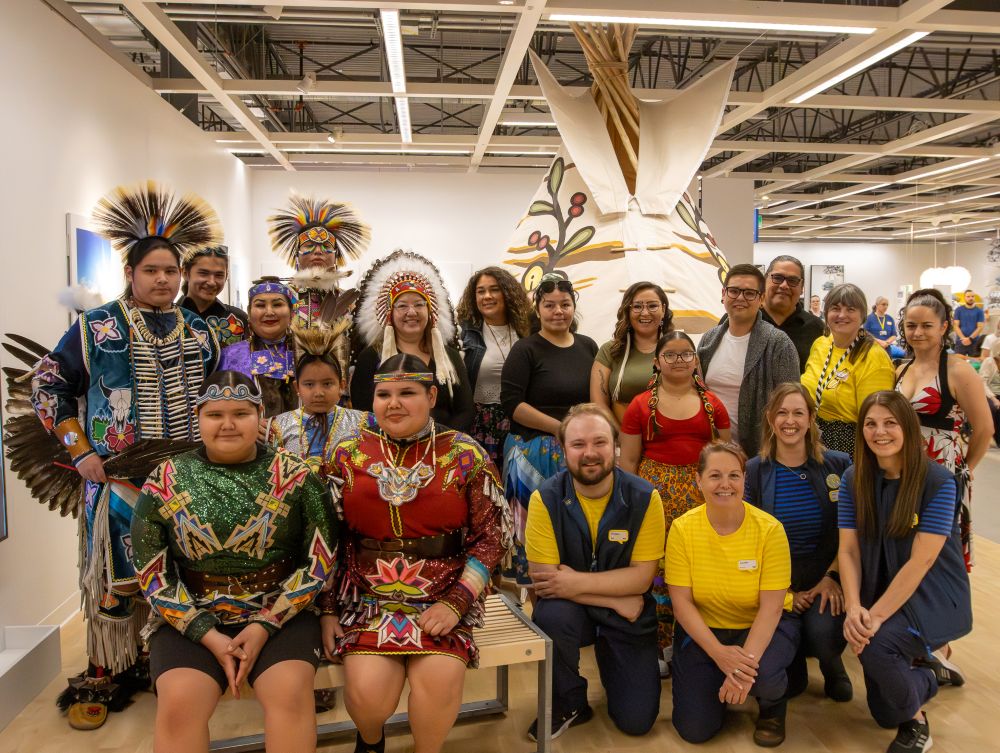 IKEA Winnipeg unveiled an educational teepee installation and contemporary room displays inspired by members of the Indigenous community on June 21.
IKEA Winnipeg unveiled an educational teepee installation and contemporary room displays inspired by members of the Indigenous community on June 21.
For Lesley Beardy, it began on the land.
Before starting work as the Indigenous adviser and curator of an in-store installation at IKEA’s Winnipeg location, Beardy invited company staff to take part in ceremonies and receive teachings about her worldview and traditions.
Beardy, who is both Anishinaabe and Inninew from the Misipawistik Cree Nation, wanted to provide employees with a space in which they felt safe to ask questions and where they could develop a better understanding of the importance of IKEA’s national reconciliation strategy.
“My role is to serve as a bridge between IKEA Winnipeg and the Indigenous community, ensuring that our efforts are rooted in cultural safety, thoughtful planning and mutual understanding,” says Beardy, a photographer, narrative therapist and counsellor who works with emerging artists in the area. “I have a responsibility to keep my Indigenous community safe in the process while working with non-Indigenous organizations. It has been a joyful and exciting experience to bring both communities together in a meaningful way.”
With help from Beardy and a team of artists and advisers, IKEA raised a teepee and unveiled furniture showrooms inspired by contemporary Indigenous living spaces on June 21 to coincide with National Indigenous Peoples Day.
Beardy tells strategy that colour palettes in the home displays call back to 1940s and 1950s beadwork from the local Treaty Five Territory and that circular-lighting elements echo the teachings of the teepee, which include lessons about interconnectedness and the cyclical nature of life. She also harvested traditional healing medicines to be featured in the display.
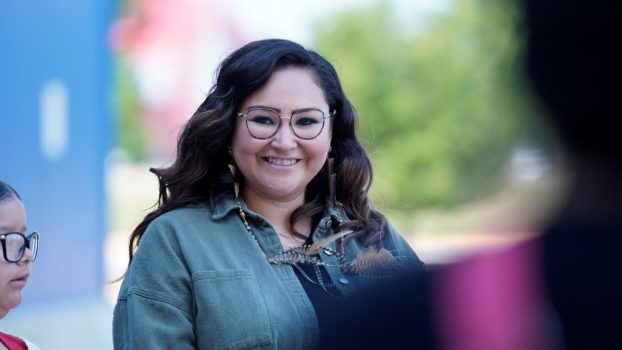 Lesley Beardy, adviser and curator for IKEA Winnipeg’s reconciliation project.
Lesley Beardy, adviser and curator for IKEA Winnipeg’s reconciliation project.
Portraits, trophies and everyday items are woven into room designs, one of which takes inspiration from the living space of grandmother and matriarch Marie Walker, whose daughter Desiree Marie Walker passed away on Feb. 22, 2009. Beardy says the room conveys the resilience, love and togetherness that are part of Marie’s personal home, where Desiree’s three surviving children are now being raised.
“It is vital to honour the real-life experiences of Indigenous families impacted by the ongoing tragedy of missing and murdered Indigenous women, girls and two-spirit+ individuals,” Beardy says. “Despite unimaginable loss, many continue to create homes that are loving, safe and grounded in strength.”
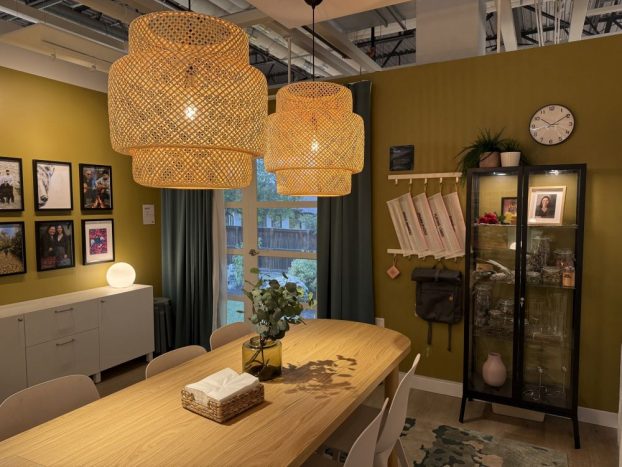 A contemporary family-room setting inspired by Indigenous families at IKEA Winnipeg.
A contemporary family-room setting inspired by Indigenous families at IKEA Winnipeg.
IKEA Canada has rolled out a number of projects since its reconciliation strategy was established in 2021. The initiative was inspired by the Truth and Reconciliation Commission’s Call to Action 92, which urges corporations to apply the principles of the UN Declaration on the Rights of Indigenous People to their operations.
John Williams, IKEA Canada’s leader of equality, diversity and inclusion, tells strategy that the Winnipeg installation and similar projects in Halifax, Calgary and Edmonton represent the company’s ambition to create awareness and develop reciprocal partnerships with Indigenous communities.
“These spaces are not about selling more products or even about traditional marketing,” Williams says. “Our real focus is on making a meaningful impact on our Indigenous co-workers, partners and community members. It’s about showing genuine respect, building trust, fostering that sense of belonging and demonstrating our commitment to reconciliation.”
 IKEA staff member Ryan Miranda, left, and elder Lionel Houston work on the teepee exhibit last month.
IKEA staff member Ryan Miranda, left, and elder Lionel Houston work on the teepee exhibit last month.
Andrea Dreilich, communications and interiors manager at IKEA Winnipeg, tells strategy that the spaces are part of a continuing long-term plan to celebrate Indigenous culture, adding that the company will continue to work with communities to better understand customer needs and gather ideas for improvement.
Dreilich says part of the ambition is to close the gap between the Indigenous population of Manitoba, which according to census data accounts for 18% of the province’s inhabitants, and IKEA Winnipeg’s Indigenous customer base, which the company says currently makes up 12% of its clientele.
“Our goal is for local families to see themselves represented in our store and to be inspired to make small improvements in their own homes,” Dreilich says. “Ultimately, we want our community to view us as a partner in helping them live better lives at home.”
For her part, Beardy says seeing aspects of her culture reflected at a global retailer like IKEA has been a powerful and meaningful experience and that “people are genuinely blown away.”
“I wanted to create an opportunity to educate others about important issues while also celebrating the beauty of our culture and the values we hold, especially the deep importance we place on family and children, which was interrupted with the creation of the Indian Act, Indian residential schools and CFS [Child Family Services],” Beardy says. “This unique opportunity to represent my community within a global chain like IKEA is truly an honour. My hope is that the greater public become more aware and develop compassion and a deeper understanding.”

